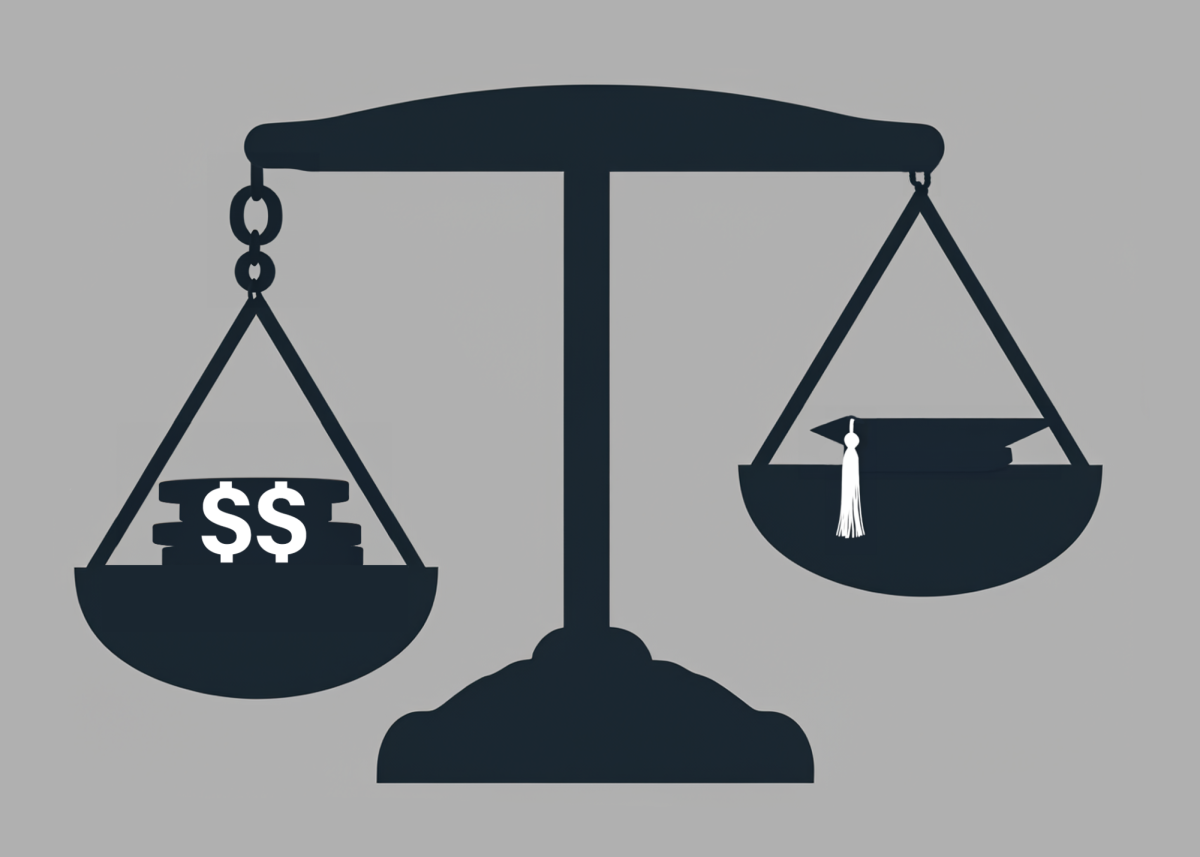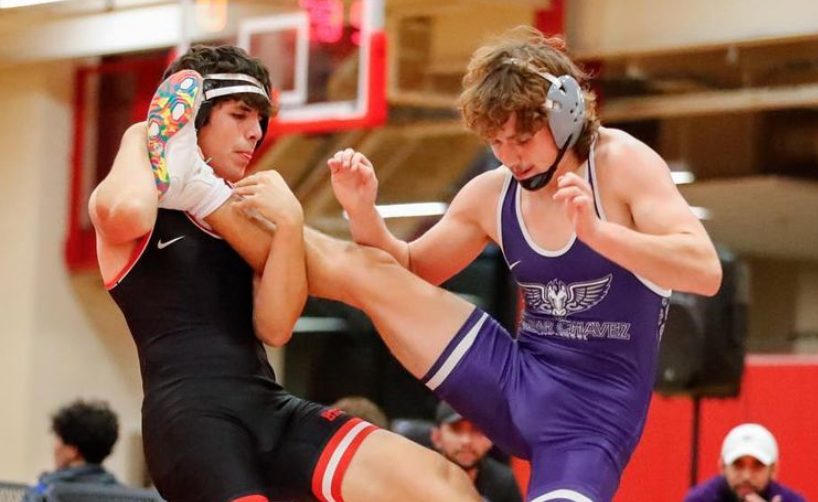New state legislation proposed Feb. 7 to protect youth athletes
By Eric Villanueva ’11
THE ROUNDUP
 Picture the football two yards shy of a first down.
Picture the football two yards shy of a first down.
The coach calls a quarterback draw straight up the middle.
The quarterback snaps the ball and follows his blocks.
Somewhere short of the first down, the quarterback meets with a defenseman, leading with his head, who tackles the quarterback for a stop.
Inside the defensive player’s head, as he slams into the base of the quarterback’s shoulder pads, his brain hits the inside of his skull.
As he stands up after the hard tackle, he feels dizzy and foggy.
Though this is a hypothetical situation, this is all too common for Mr. Chris White, Brophy’s head athletic trainer.
In his 25 years as an athletic trainer at Brophy, Mr. White said he has seen hundreds of concussions like the one suffered by the imaginary player, not only in football, Brophy’s highest risk sport for concussions, but in many other sports like soccer, wrestling, basketball, baseball and volleyball.
“It’s not like it happens to everyone, but it is pretty common,” Mr. White said. “In this year alone, with our three levels of football, we’ve had at least a few from each team.”
Mr. White defines a concussion as a hit or blow to the head that causes a person’s brain to function differently than normal after it is jarred by impact.
According to Mr. White, many athletes have the false notion that one has to lose conscious to sustain a concussion.
“For the vast majority of concussions, no one loses consciousness,” Mr. White said. “In fact, it’s only in severe concussions that people lose consciousness.”
Most athletes, according to the Centers for Disease Control and Prevention, suffer several symptoms from concussions, including headaches, vomiting, dizziness, blurry vision, fatigue, concentration or memory problems, confusion and sensitivity to light or noise.
But, even with some of the symptoms of a concussion, some athletes stay in the game and increase their risk of more serious problems.
“If an athlete who is concussed plays and takes another hit to the head, he runs the risk of suffering from Second Impact Syndrome, which is lethal brain swelling,” Mr. White said.
Medical officials say that’s why the importance of not playing while symptomatic and reporting concussions cannot be stressed enough.
When an athlete does report a concussion Mr. White waits for him to be symptom free, which varies for each person and can last for several weeks, before testing the athlete’s brain function.
One of the neural tests Mr. White and his assistant athletic trainers use is called the Sport Concussion Assessment Tool 2, or SCAT2, which is a two-page, pink form that asks athletes to rank their symptoms and perform coordination and cognitive tests.
In addition to the SCAT2, the athlete takes a computerized neurological test called an ImPACT test, which compares his current brain function with his recorded normal brain function by answering a series of questions.
“The real value is that for all our high-risk athletes, we do a baseline test. We give them these tests before they have a concussion to see how they normally function,” Mr. White said. “After a concussion, we test them again, and now we have an objective tool to see if they’re back to normal.”
As part of a study on concussions and their effects on student-athletes by A.T. Still University in Mesa, Brophy receives the ImPACT testing for free.
Meanwhile, the athlete also follows a four-day progression of increasing exercise. On the fifth day, the student returns to normal play.
“Typically what we see is that they’re out of competition for a week to two weeks,” Mr. White said.
But if the athlete tries to jump back into the game too quickly, he can delay the healing process.
A study released by the Center for Injury Research and Policy at Nationwide Children’s Hospital in 2009 revealed that between 2005 and 2008, about 40 percent of athletes with a concussion were allowed to return to play too soon.
Once the athlete is cleared to play again, he has to be careful how he plays because his risk is now higher for subsequent concussions, which can happen outside of sports.
For example, a 16 year-old New Jersey high school basketball player has suffered 11 concussions, which have sidelined her dreams of college basketball and a normal life, according to ABC News.
She said she also now has trouble in school.
In fact, research by the Safe Concussion Outcome Recovery and Education Program has shown that some student-athletes have trouble with memory and concentration more than a month into recovery.
Mr. White said he sees these problems in concussed Brophy student-athletes.
“It’s really frustrating for them when they can’t remember things or they can’t concentrate,” he said.
And if athletes try too hard to study or memorize, they can delay their healing or trigger additional symptoms, which is why Mr. White informs teachers of student-athletes’ concussions, according to Mr. White.
Athletes with concussions also run the risk of developing Chronic Traumatic Encephalopathy, or CTE, which may cause early onset of Alzheimer’s disease, memory problems and depression.
“It’s a whole shift in the way we treat it and evaluate it,” Mr. White said.
Since Brophy has changed its protocol for concussions to match the highest universities and the NFL, Mr. White said coaches have been accepting of the new practice.
“They’ve been very good about protecting our kids who have a concussion, encouraging or demanding kids to report concussions and telling me or my staff about a kid who has a concussion so we’re on it,” Mr. White said.
While federal legislation may be on the way to mandate benching and testing of athletes who suffer concussions and new rules in the NFL to prevent concussions may trickle down to high school football and other sports, Mr. White said the emphasis needs to be placed both on reporting symptoms of a concussion and not playing with a concussion.
“If there’s one thing that I hope everyone understands is the real importance to reporting symptoms (of concussions). The real challenge is when a young athlete thinks, ‘Boy, if I report this concussion, I’m not going to be able to play,’ and they don’t report it,” Mr. White said. “I want to emphasize that I hope everyone understands that is a real dangerous thing that can cause some permanent neurological problems.”
In the Arizona State Senate Tuesday, Feb. 7, Legislators introduced a bill that aims to curb concussions in youth sports.
Sponsored by the National Football League, doctors and healthcare professionals, Senate Bill 1521 would require an athlete who suffers a concussion in a game or practice to be removed from play until he is evaluated and cleared by a doctor or trained medical professional.
Brophy already follows many of the bill’s proposed policies for concussions, according to Mr. Chris White, Brophy’s head athletic trainer.
Mr. White and varsity wrestler Connor Devereux ’11, who was concussed, were interviewed concerning the introduction of this new concussion legislation. Watch the interview for Channel 12 News online.
Also see a live interview Mr. White gave Tuesday morning, Feb. 8 on Loyola Field for ABC 15 News online.

























